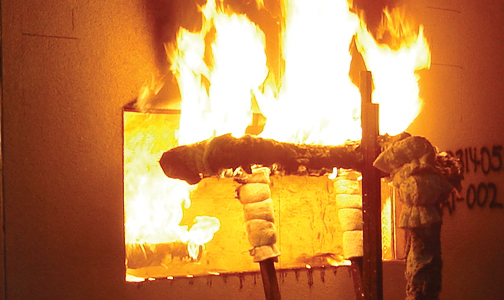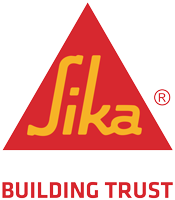How much do you know about the NFPA 285 fire test?

Published by National Fire Protection Association (NFPA), the NFPA 285 Standard Fire Test Method for Evaluation of Fire Propagation Characteristics of Exterior Wall Assemblies Containing Combustible Components is designed to evaluate fire propagation characteristic of exterior wall assemblies and panels used as components of curtain wall assemblies that are constructed using combustible materials or incorporate combustible components.
To put it simply, the test evaluates how a fire will spread on an exterior wall assembly that includes combustible materials. Here are a few items to be aware of to help understand NFPA 285 testing and if the specified wall assembly complies.-
The NFPA 285 simulates a multi-story building and how the exterior wall will perform in a fire situation. The full-scale, two-story test with a lower-story window opening evaluates a specific wall assembly as a whole, not individual components.
-
The International Building Code (IBC) requires NFPA 285 compliance in Types I, II, III and IV (non-combustible) buildings that include combustible materials such as water resistive barriers, foam plastic insulation and combustible claddings such as Metal Composite Materials (MCMs).
-
Building design is increasingly incorporating combustible materials such as air and water resistive barriers and exterior foam plastic insulation to achieve greater levels of energy efficiency to meet the requirements of the International Energy Conservation Code.
-
Although engineering judgement is used to incorporate alternative products and components in a wall assembly, just swapping out components of a tested wall assembly without this analysis can adversely impact the assembly performance in a fire.
-
The NFPA 285 test is different than ASTM E119, which is used to establish fire-resistance ratings for a wall assembly. It is possible that a wall assembly has a fire-resistance rating per ASTM E119 but does not comply with NFPA 285 and vice versa.
-
The wall assembly is considered compliant based on visual observations during and after the test and from temperatures recorded throughout the assembly during 30-minutes of fire exposure.
-
You can find out if a wall assembly is compliant by searching the UL database, from an evaluation report such as those published by ICC-ES or Intertek or directly from the manufacturer. Building materials manufacturers invest heavily in the testing and evaluation of their products and are more likely to have the most complete and up-to-date performance results.
- Senerflex Vulcan NC Wall Systems - a continuously insulated, water-drainage wall cladding system featuring non-combustible ROCKWOOL Frontrock™ continuous exterior insulation and Senergy Senershield® fluid-applied air/water-resistive barrier that provides continuous air and moisture protection.
- Channeled Adhesive CI Design - an adhesively attached, continuously insulated water-drainage exterior cladding incorporating vertical drainage channels and a secondary air/water-resistive barrier.
- Channeled Adhesive CI Design with MaxGrip Veneer Mortar - an exterior cladding system with a continuous air/water-resistive barrier and insulation, featuring MaxGrip Veneer Mortar, a high-strength, specially formulated setting bed mortar used to adhere natural and manufactured stone, tile, and thin brick veneer.
- Platinum CI - an exterior cladding system with drainage, featuring Neopor GPS Plus Rigid Insulation Board.
- Platinum CI Stucco Ultra - a continuously insulated premium cement plaster stucco system with enhanced water management, featuring Senershield air/water-resistive barrier.
- Platinum CI Stucco Plus - a premium continuously insulated cement plaster stucco system featuring Senershield air/water-resistive barrier.

